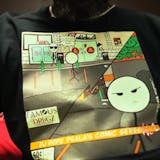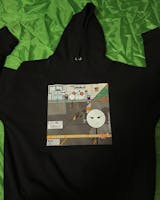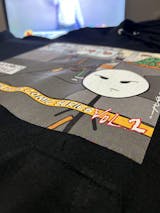The tips you will learn about DTF transfer will help your design project turn out better. DTF printing has been around for a while, but it's only now becoming widespread. In fact, there are still many people who don't know this type of printing. Especially for beginners, it may not be easy to use and design with it. However, when you learn some tips, you can use it in your application as if you were a digital printing professional. You can follow the tips below to make a quality and professional DTF print.
DTF Film Usage
You should know that you will use DTF film only once. This means that these films are for single use only. If you think that you will use DTF films more than once, give up this idea. Because this is impossible for this print. The coating on the DTF film will be exhausted after printing. This coating affects the degree of ink absorption. If you try to reuse the DTF film, the ink will run off. The result is a horrible and unusable image.
Handle the DTF Dryer Carefully
The DTF dryer must be handled with care because it is fragile. Especially the heating lamp is very fragile. When this breaks, it is very difficult to work with the machine. You must adjust the voltage of the powder shaker carefully. When using the DTF dryer, you must be careful with the heating lamp. Because it is sensitive, it can be damaged. If it is damaged, the power contact of the heating element may be broken and weakened.
Adjust the Temperature Temperature Well
Temperature is also an important clue to achieve the perfect result for DTF transfer. So what is the best temperature for DTF printing? The recommended temperature for DTF printing is 275-300°F (135-149°C). The recommended pressure is medium to high pressure. Your application time is between 7-10 seconds. However, these settings may vary depending on the type of heat press machine and the garment fabric. If you have a multiple order quantity, make sure to test and press.
Keeping DTF Printing Materials in Suitable Conditions
We know how important DTF printing materials are in the printing process. The quality and performance of these materials depends on proper storage conditions. At the same time, proper storage conditions will also ensure longevity. Storage conditions for transfer printing materials are as follows:
- You should store transfer materials in a cool and dry area away from the sun.
- They should not be exposed to dust and moisture. For this reason, it will be effective to store them in closed plastic bags or containers.
- Do not place heavy objects on the transfer materials. Otherwise they may be damaged.
Benefit from Design Software Flexibility
DTF printing offers unlimited advantages in terms of different design software. Since it is not selective, you can benefit from the flexibility of design software. Among the most used design software are Corel draw and Adobe illustrator. For raster image editing, you can use Adobe Photoshop or Core photo paint. These are not the only design software you can use in the DTF transfer process. There are many more examples of software and you can choose the one you want according to your design project.
Do Not Use DTG Ink as a Substitute for DTF Ink
You should not use DTG ink in a DTF printer. If you do, you will waste your resources and the result will be frustrating. Because you will not get the quality print you want. DTF and DTG inks have different chemical formulations. Since DTF inks are water-based, they are only used in DTF-specific printers.








